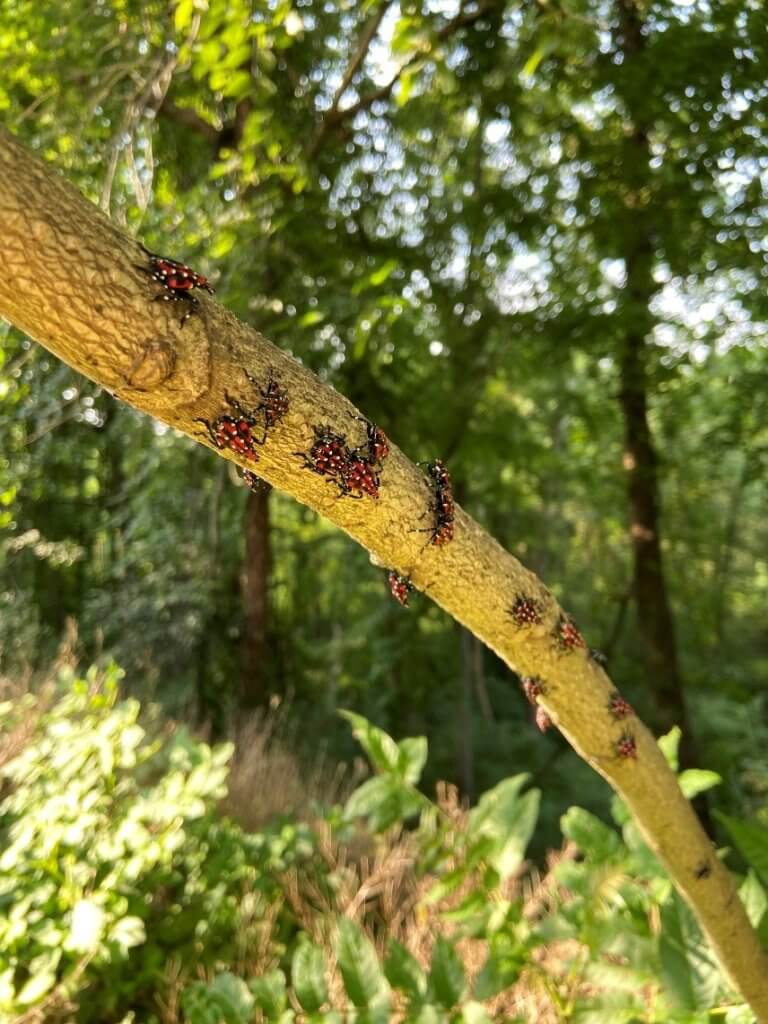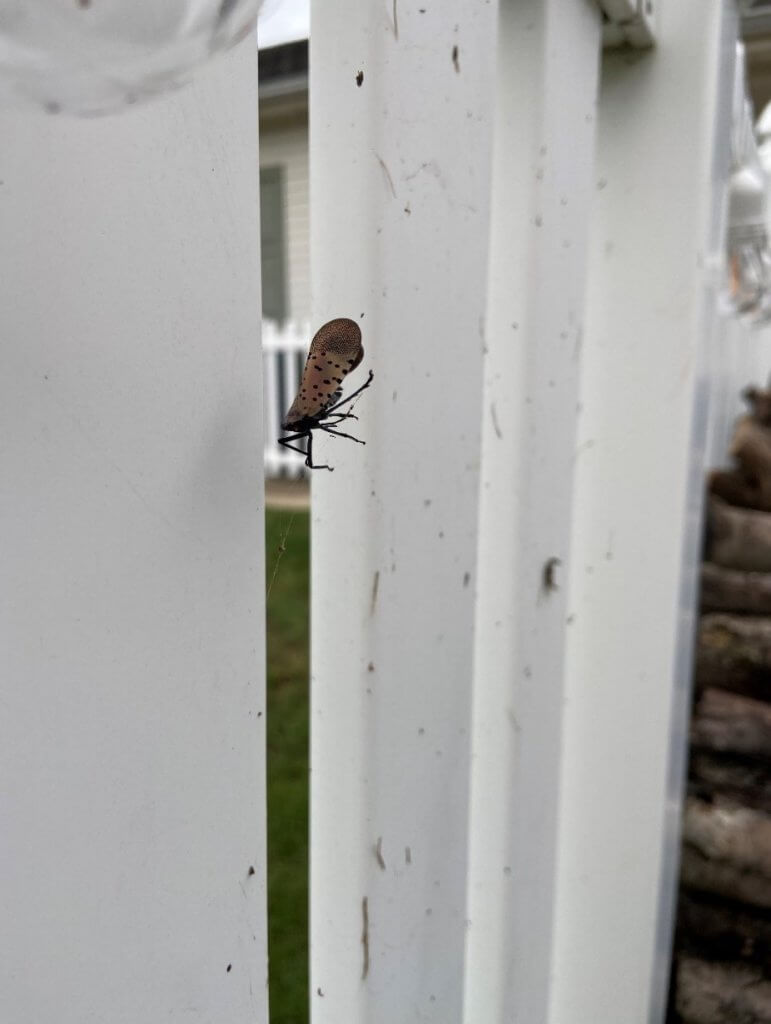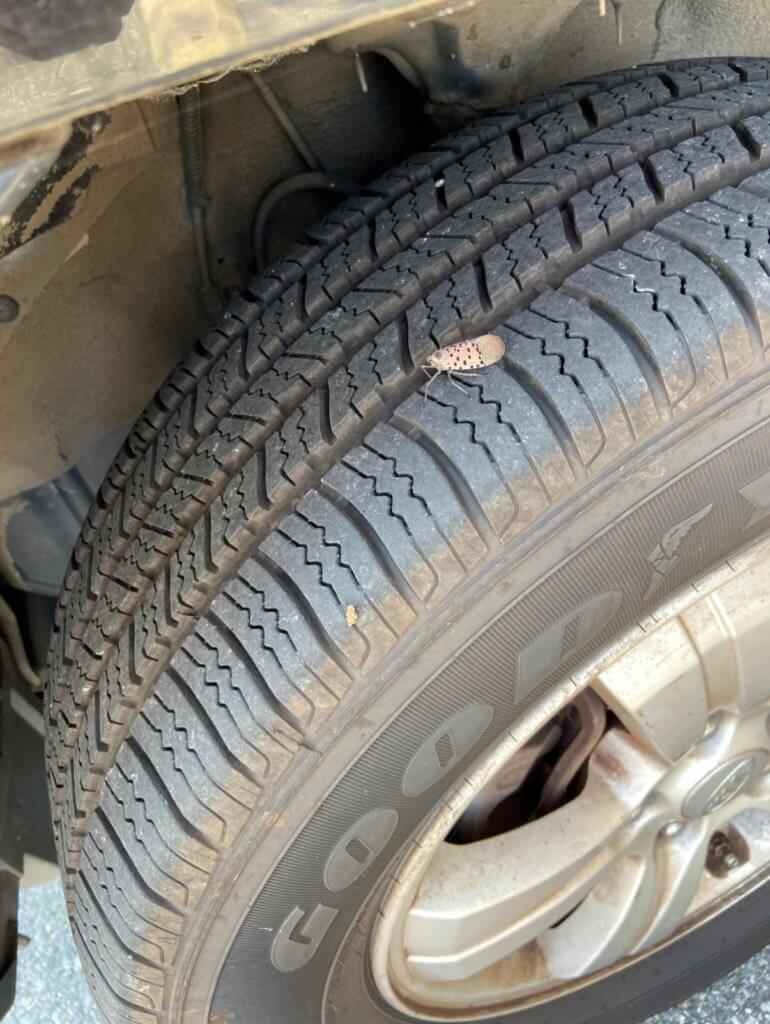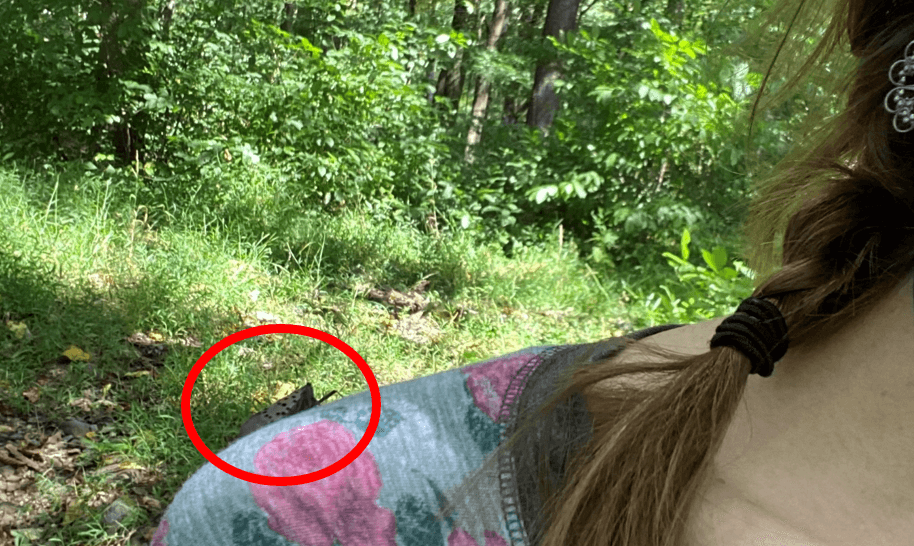Guest blog by Laurel Downs, The Nature Conservancy
Last summer I sat on the back porch of my parents’ house along the Schuylkill River in Berks County, Pennsylvania and watched what I thought was a very peculiar weevil-like bug awkwardly wander across the floorboards. Gangling legs moved like feelers topped with a broad body that tapered into a mile-long face saddled with bulging black eyes.
Out came the smartphone for identification- identifying all things animal or insect is my favorite. Low and behold this creature was not an adorably awkward weevil but the nymph stage of a notorious new invasive – the spotted lanternfly. Spotted lanternflies are native to Asia, and they were first officially detected in Berks County Pennsylvania in 2014 (but they were likely meandering porches and tree trunks about two years prior to that.) The first three immature (called “instar”) stages give the nymph a black body speckled with white dots. The fourth and final instar comes with a vibrant red coloration throughout the body; it retains the red to some extent in the winged adult phase.
Well, you know what they say, once you’re looking for a white truck, you see them everywhere. (Do they say that?) Sure enough, my mom and I started spotting the goofy little buggers all over. Live ones, dead ones, and empty exoskeletons with circular holes in the top – maybe predation or metamorphosis?

Anyway, this year I stuck around long enough to see the nymphs turn into just-as-awkward, yet oddly beautiful adults. Appreciation for aesthetics aside, these invasive insects are more trouble than they’re worth. So much so that the Pennsylvania Department of Agriculture asks for the public’s help in their spotted lanternfly alert in which they give the following advice for those who encounter the insect:
“Kill it! Squash it, smash it…just get rid of it.”
It’s important to note that in many places, you should both squish AND report these pests. Here in Berks county, we’ve had this pest for a while- but in many places, it’s very important to report it if you see them!
As a nature lover, killing is not a go-to task for me with any living creature, but with the SLF, it may be necessary considering the serious threat these insects present to our natural, agricultural, and cultural resources. The spotted lanternfly (SLF) feed on, and subsequently damage, many tree species and crops; to add insult to injury, they produce a sugary excrement known as “honeydew” in the process which attracts stinging insects and sooty black mold. At the very least, a generous coat of sticky-sweet bug poo everywhere can put a real damper on one’s ability to enjoy outdoor recreation, but SLF infestation poses an even greater threat to the health of our farms and forests- and they’re spreading.

In 2021, PA expanded their SLF quarantine, and many nearby states are following suit. While the insect is able to fly, humans are likely to facilitate their spread in rapid fashion by unwittingly chauffeuring them and/or their eggs. Each female SLF can lay between 30-50 eggs which she will happily plop down on almost ANY outdoor structure; we’re talkin’ cars, RVs, lawn furniture, plastic flamingos (probably), camping gear, and you guessed it, firewood.

Luckily more and more Pennsylvania folk are recognizing this flamboyant bug and taking the necessary…um…steps…to, quite literally, squash the problem. It’s not much, but it’s an honest effort on behalf of the public to be mindful of their surroundings and the threats to our resources. It will take more, however, to contain the spread of these conspicuous troublemakers. Fall is upon us and this is when females begin to lay rather inconspicuous eggs.
So, if you are traveling anywhere this fall, make sure to check over your vehicle and recreational items before taking them across county lines. If you are living or staying in an area quarantined for spotted lanternfly, use this checklist to ensure you don’t leave with any tree-pest stowaways looking for new territory. And please, for the love of our forests, leave your firewood at home. Buy it where you burn it.

Helpful Spotted Lanternfly Links:
- Spotted Lanternfly Management Guide
- Confirmed SLF Locations and Quarantine Areas (Map)
- SLF Checklist
- PA Department of Agriculture SLF Page
- Think you found a spotted lanternfly? Report Your Sighting!



